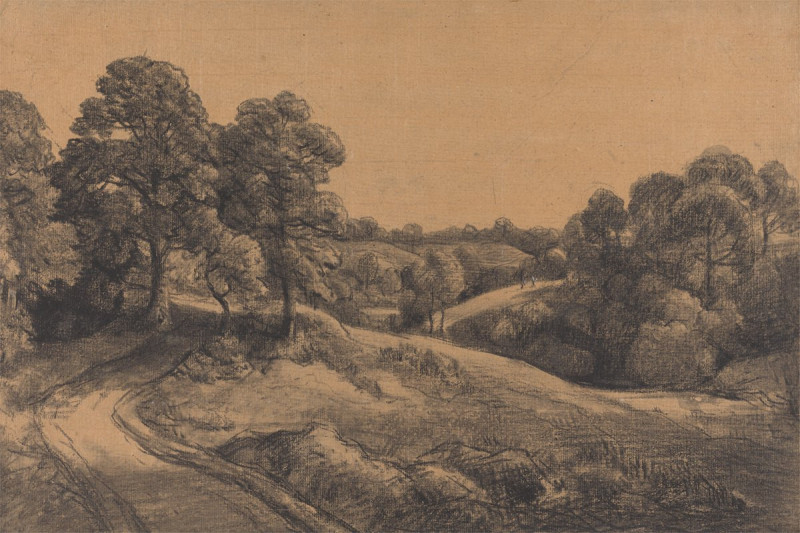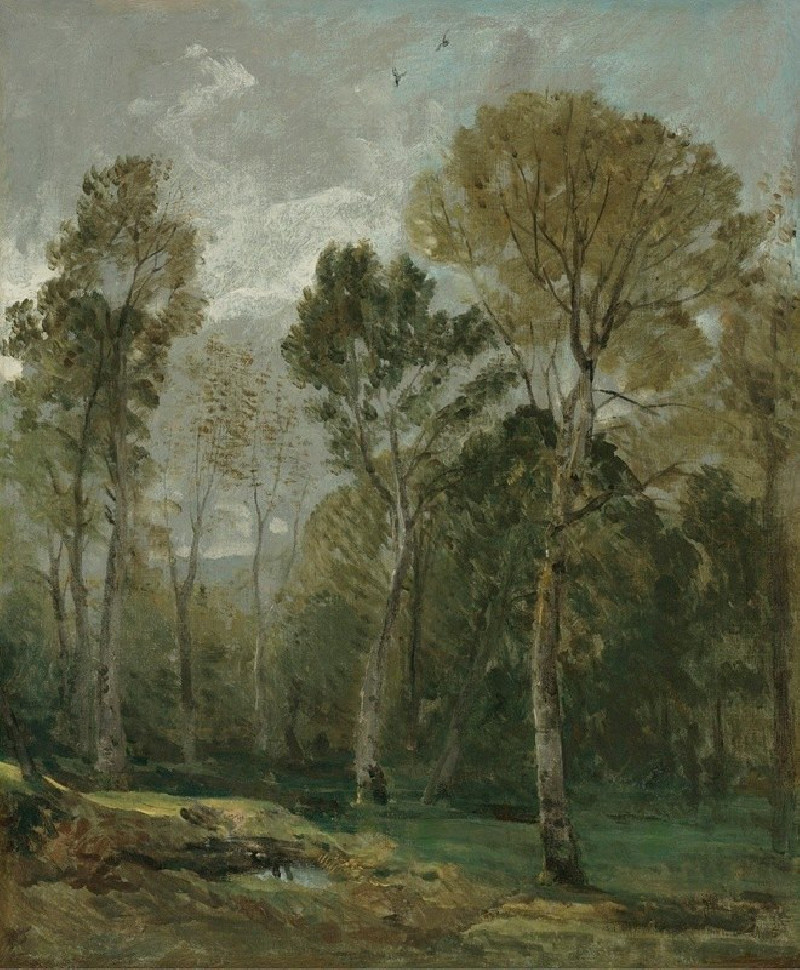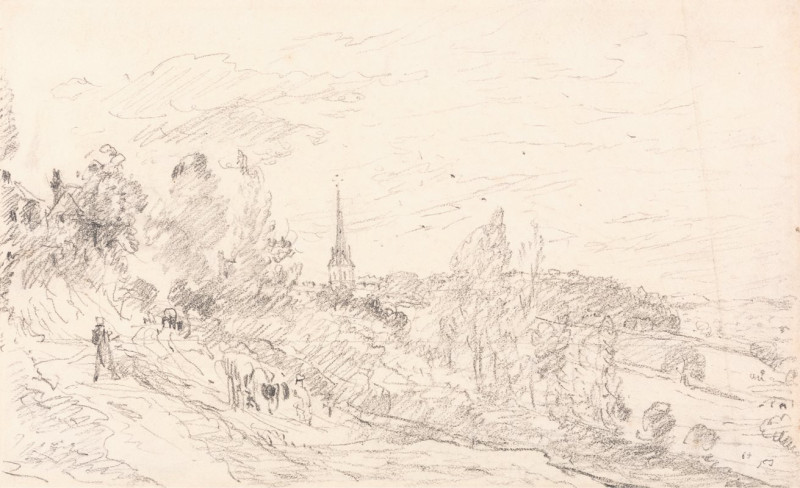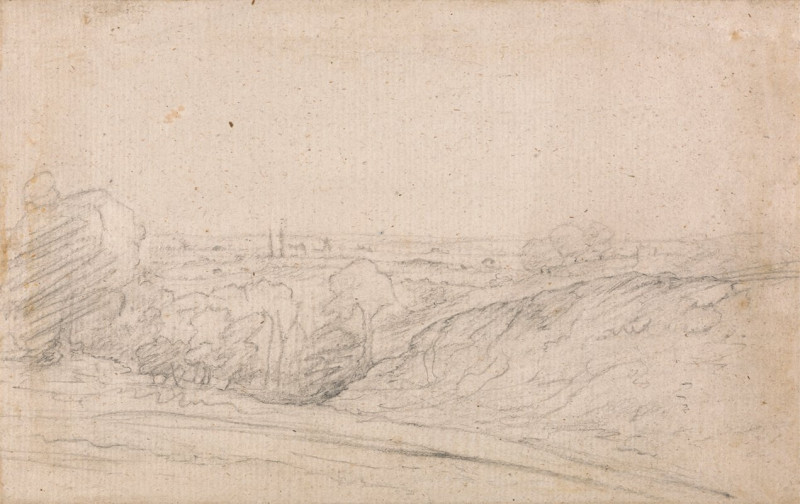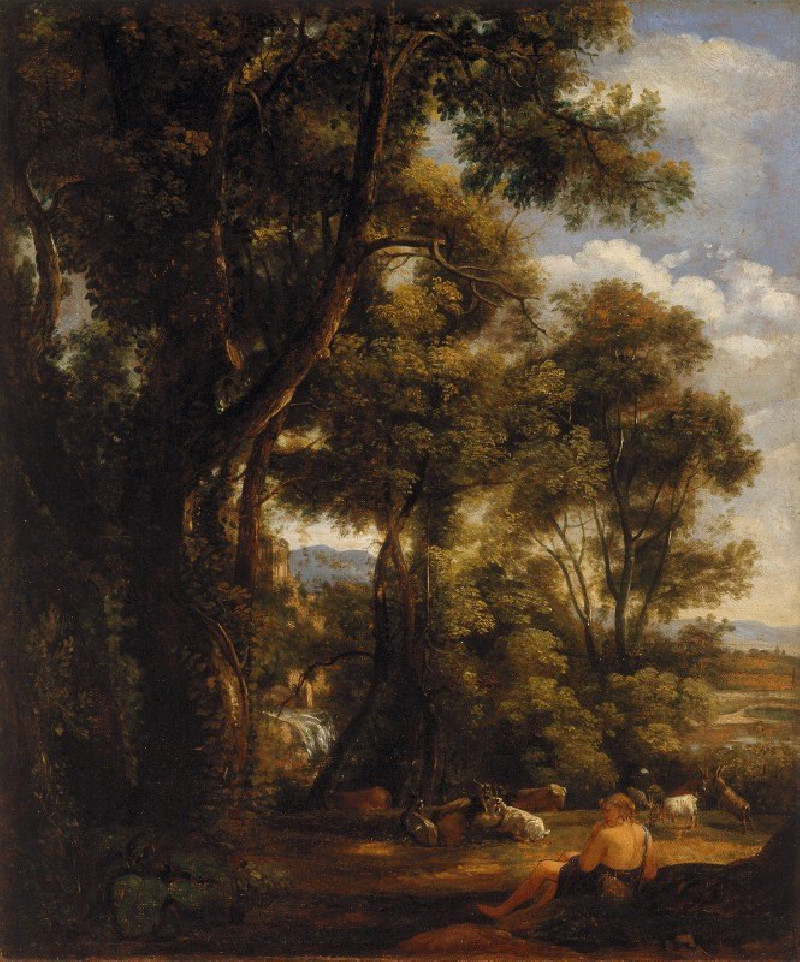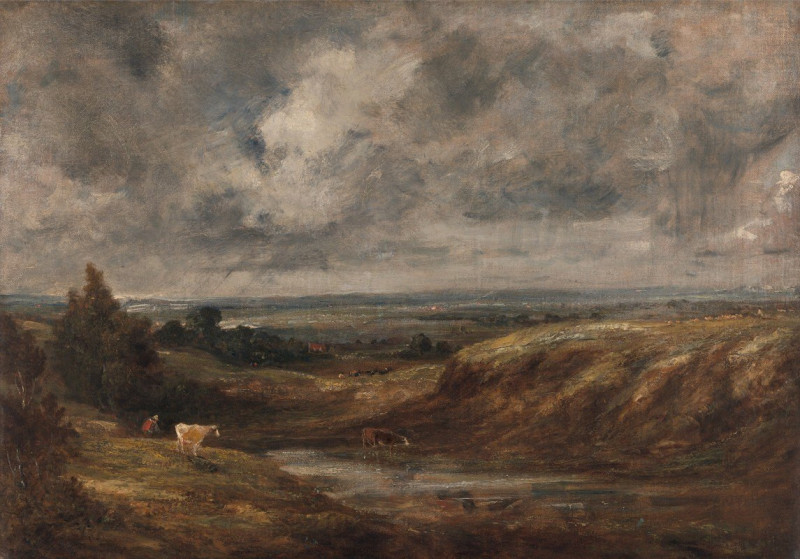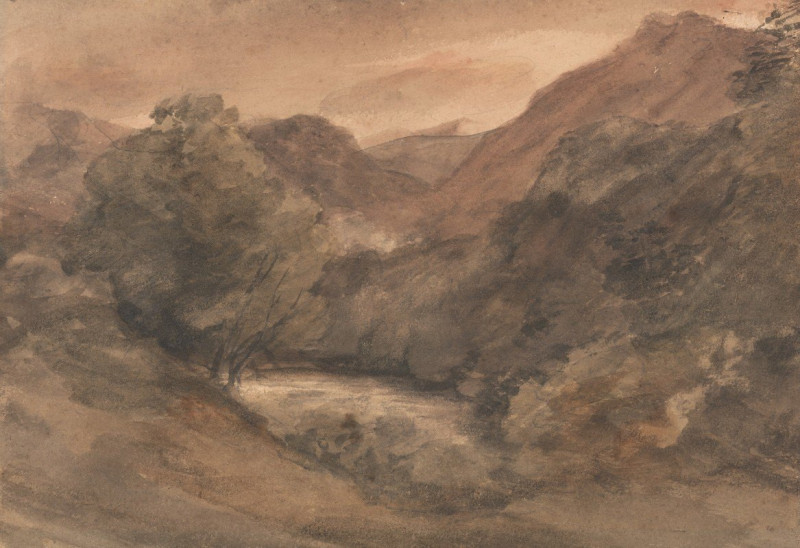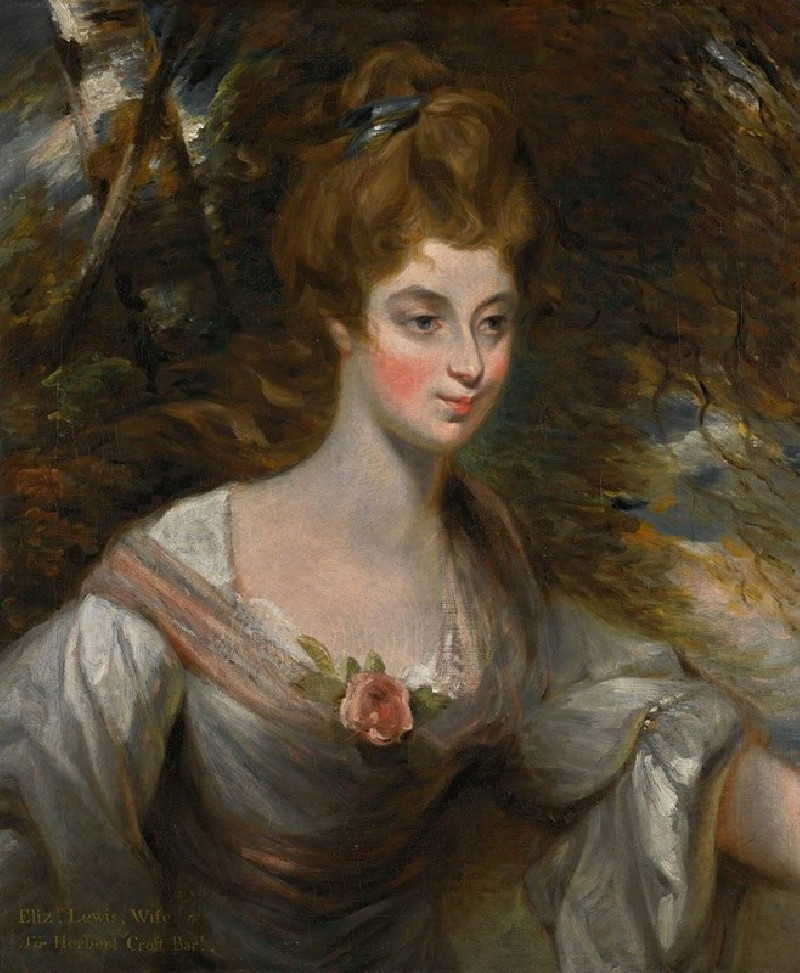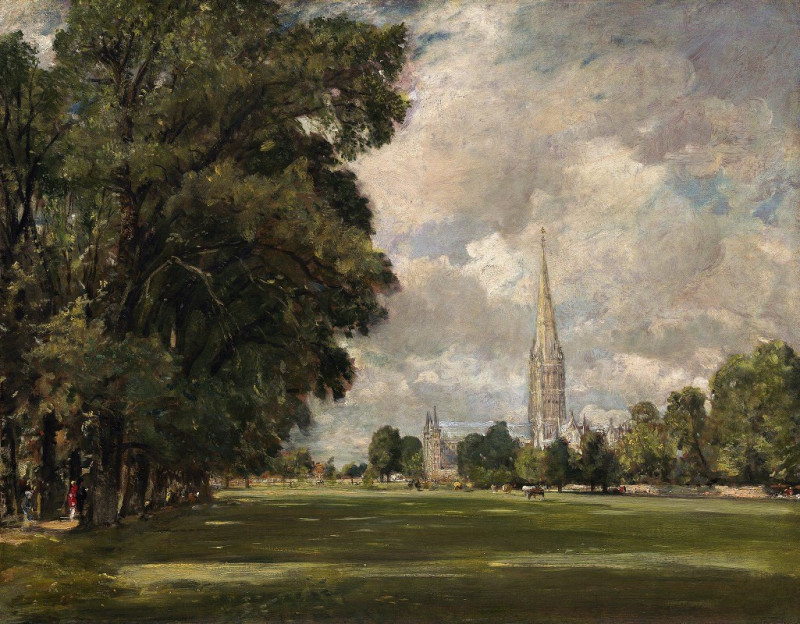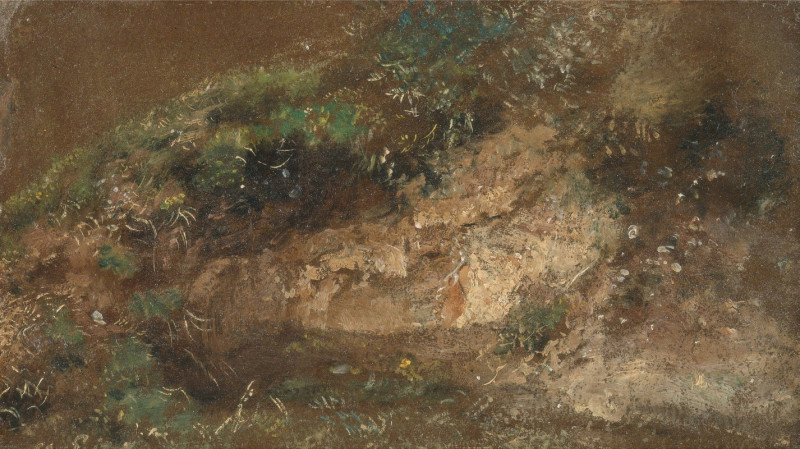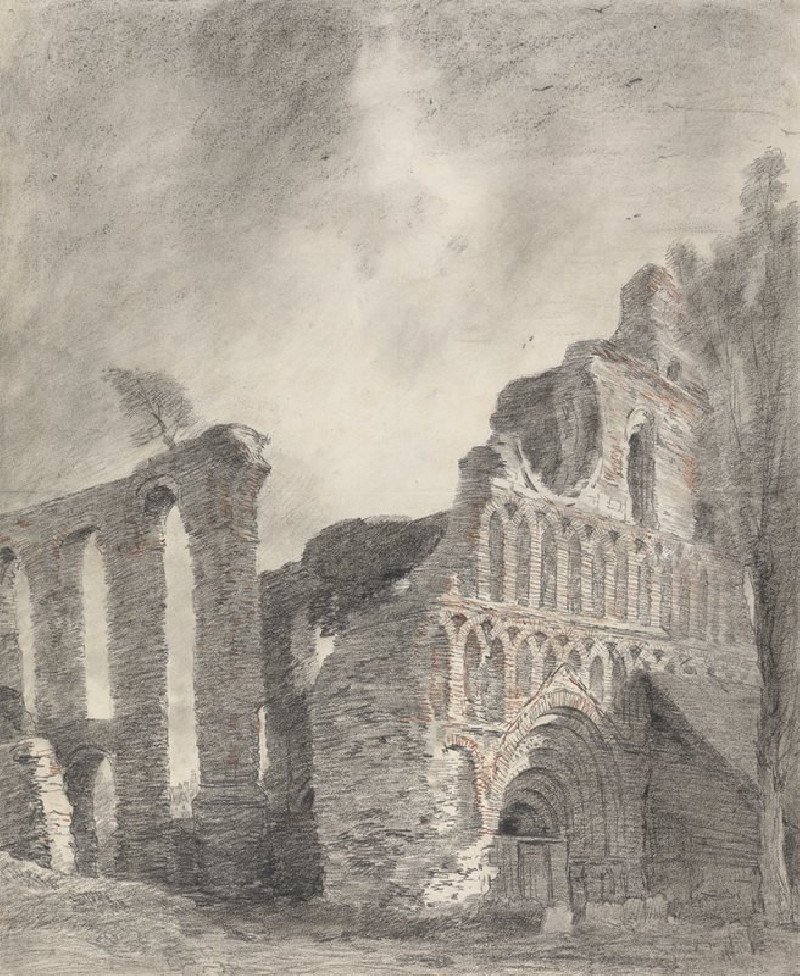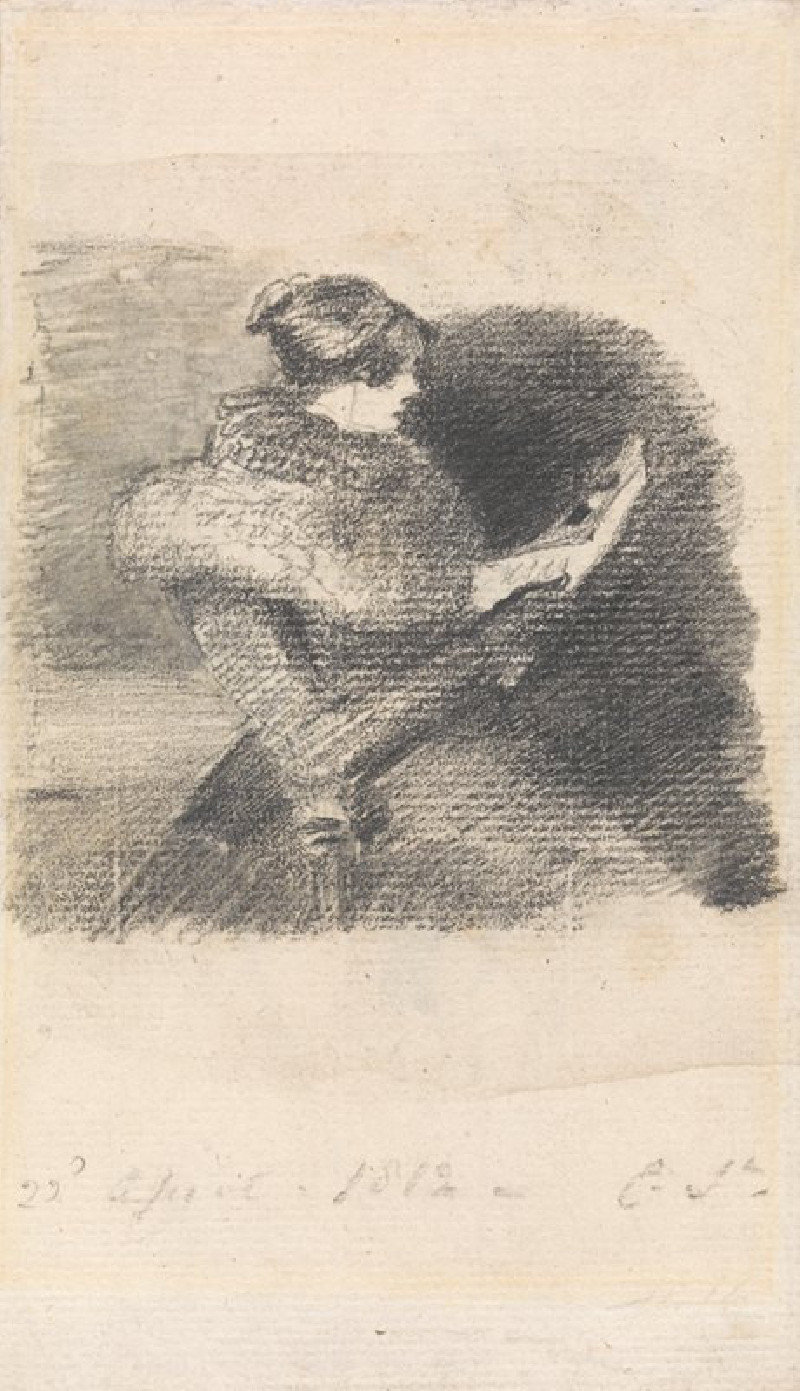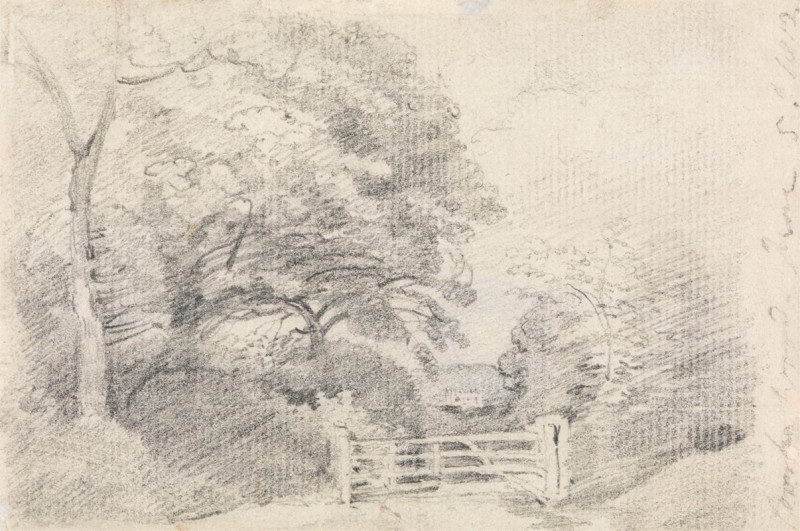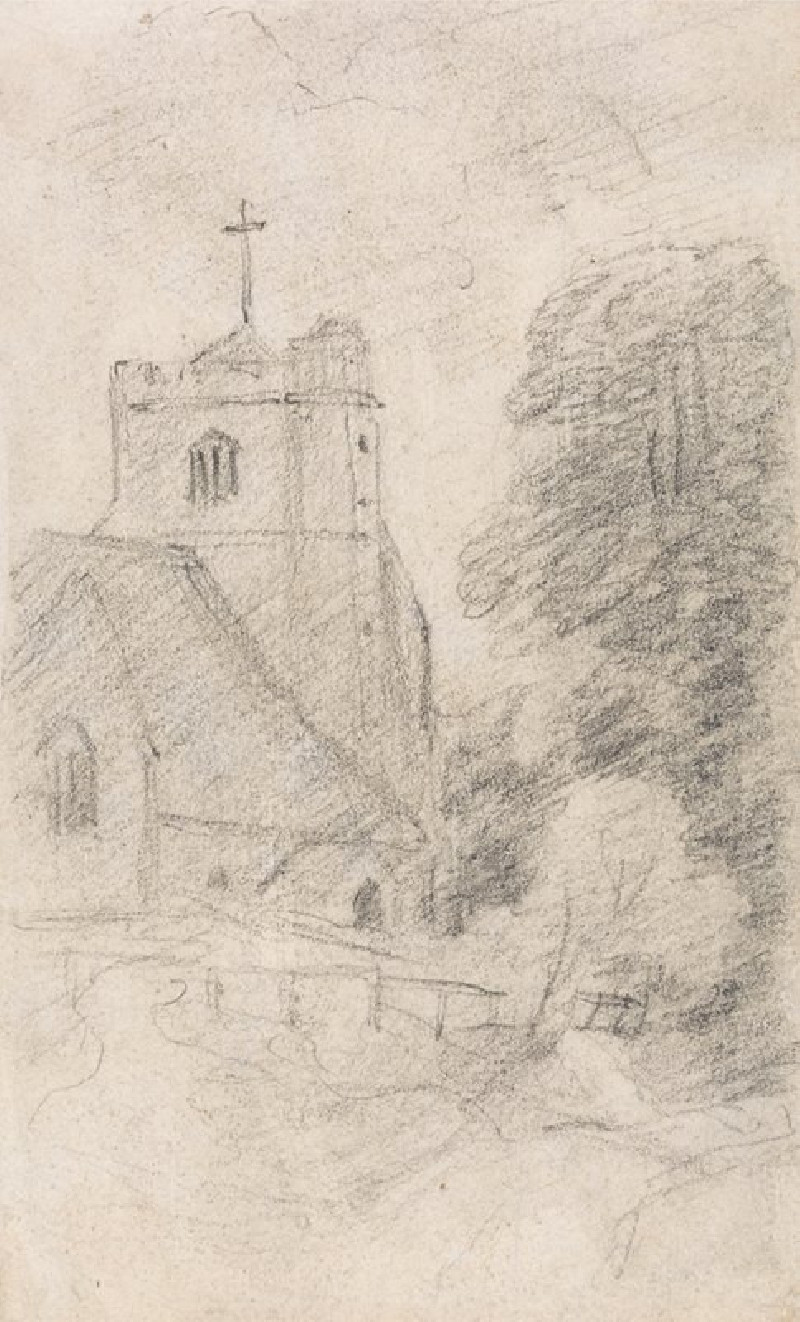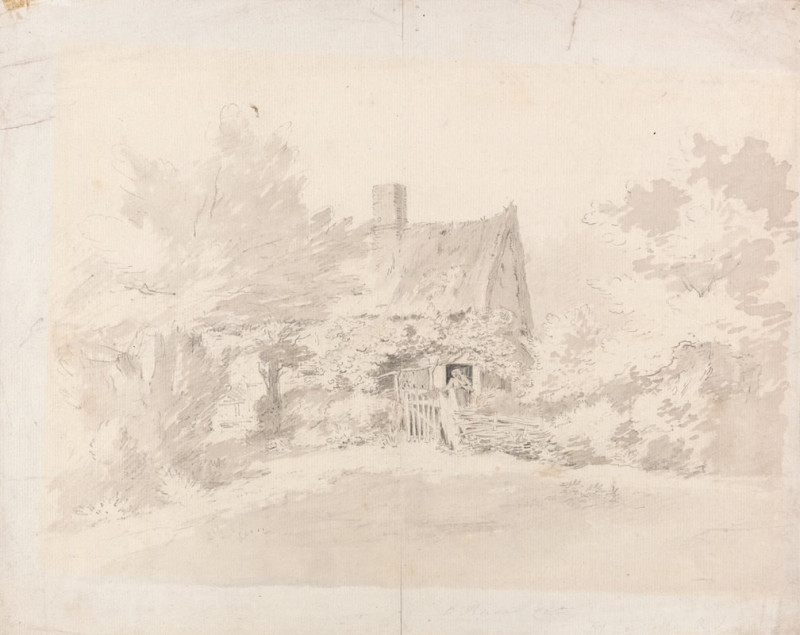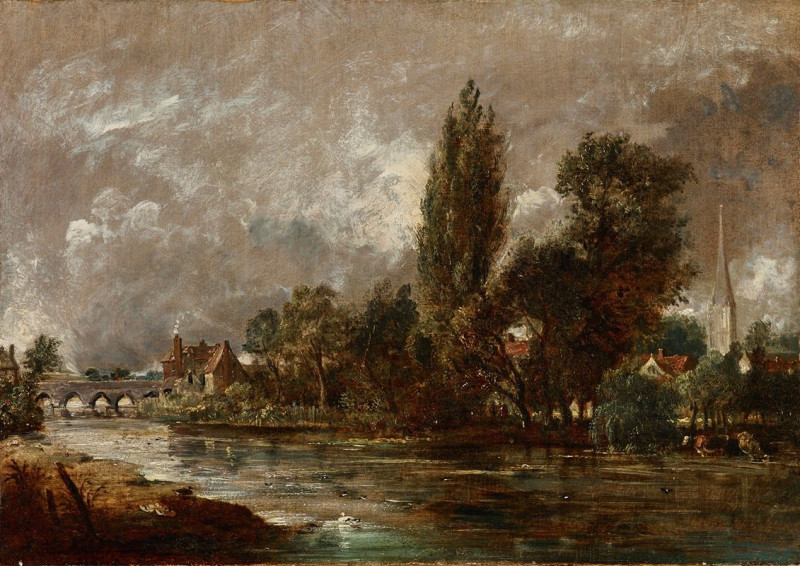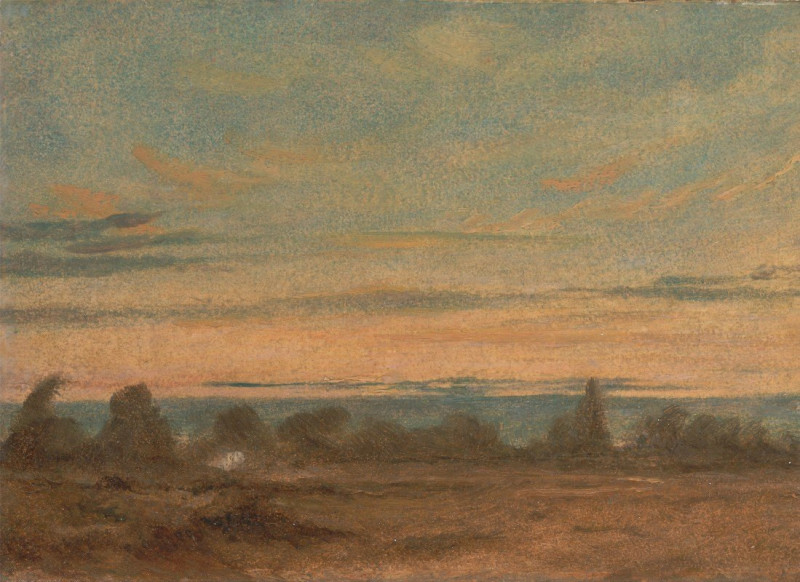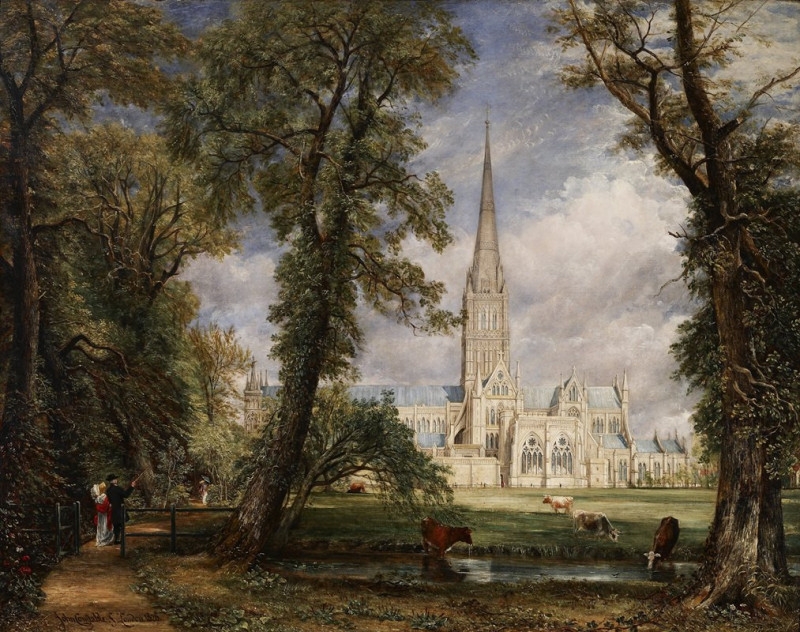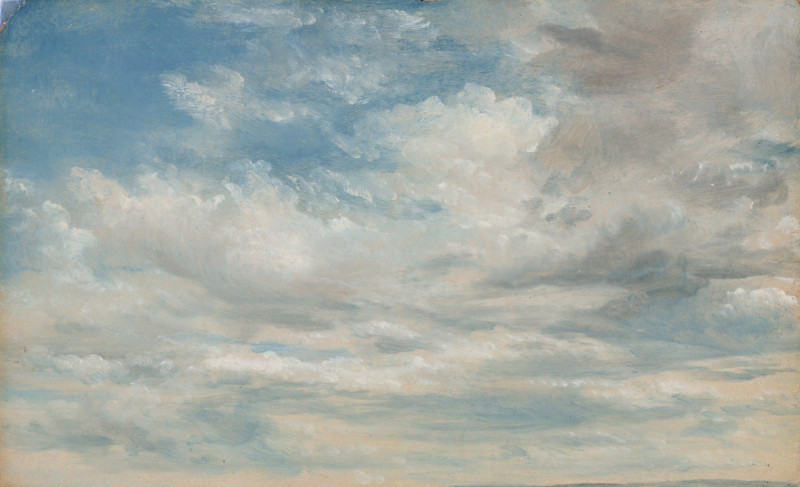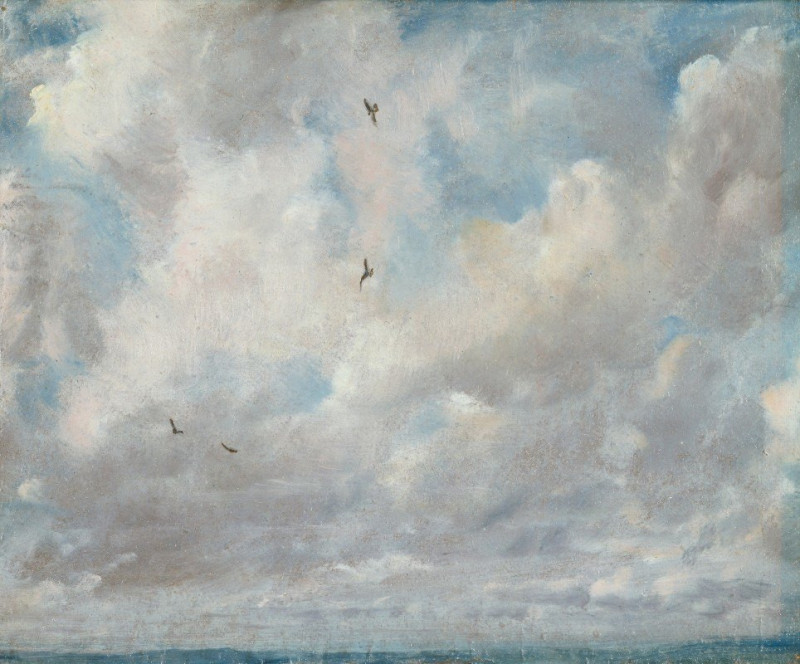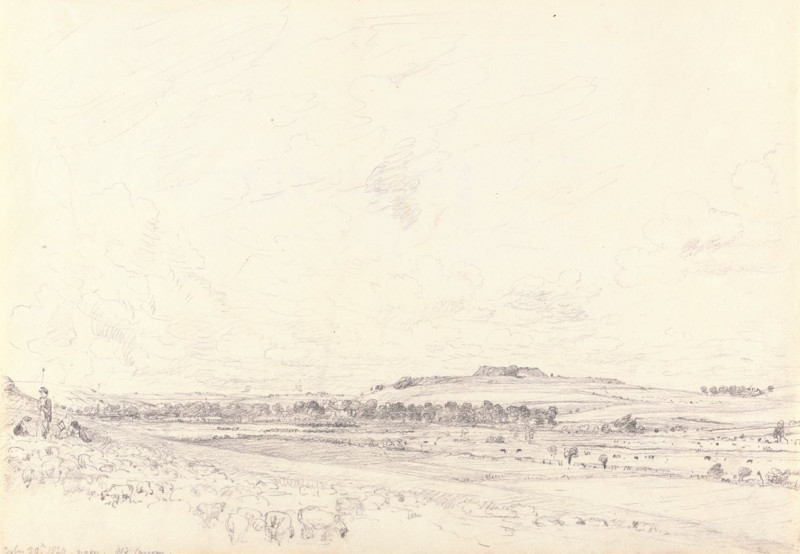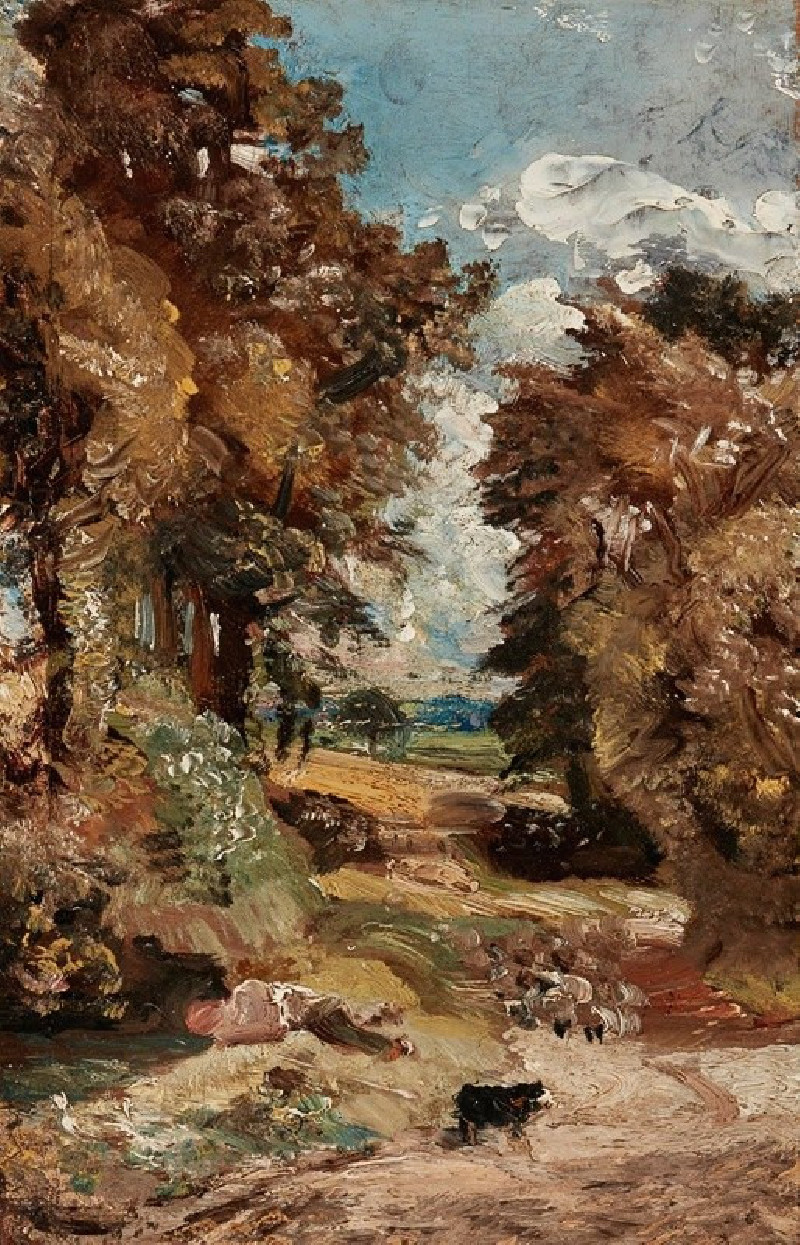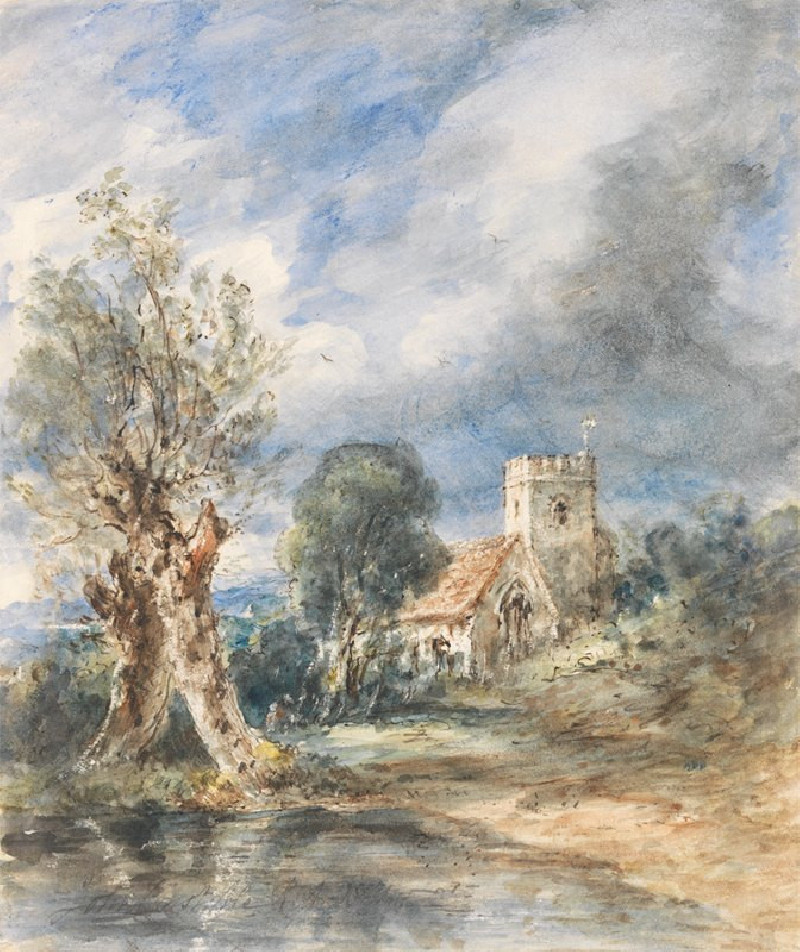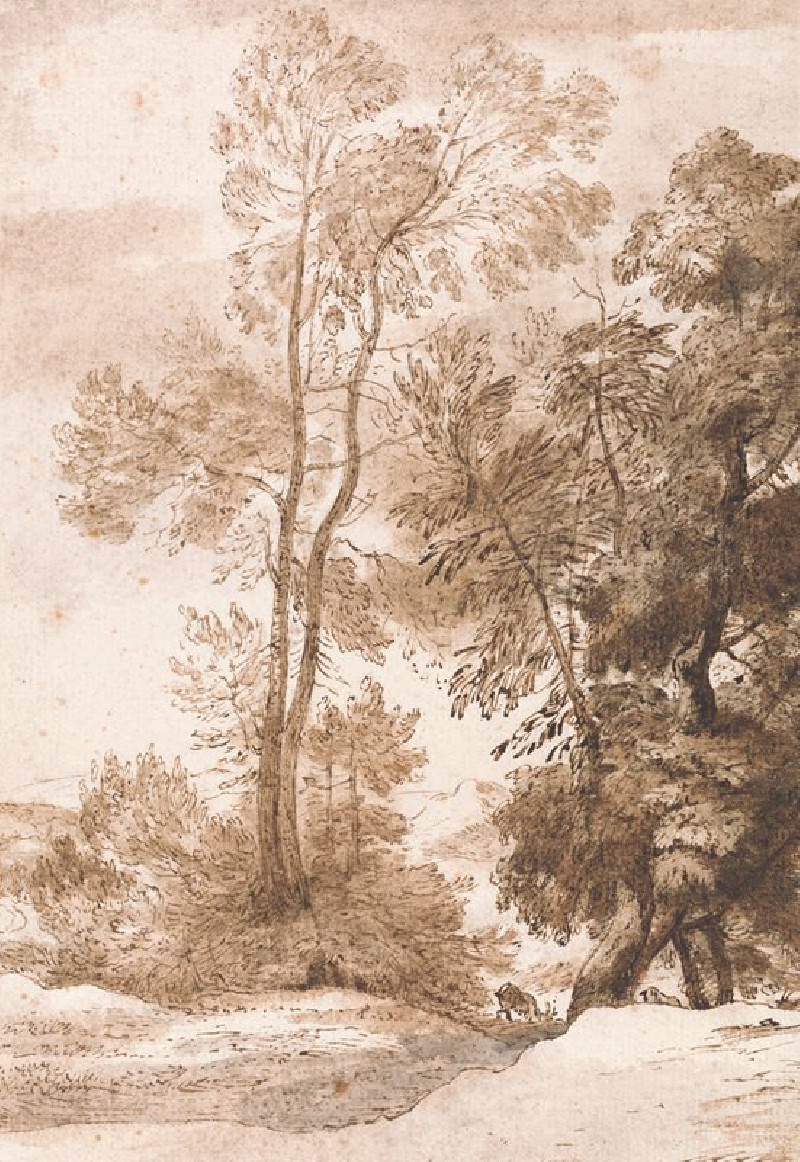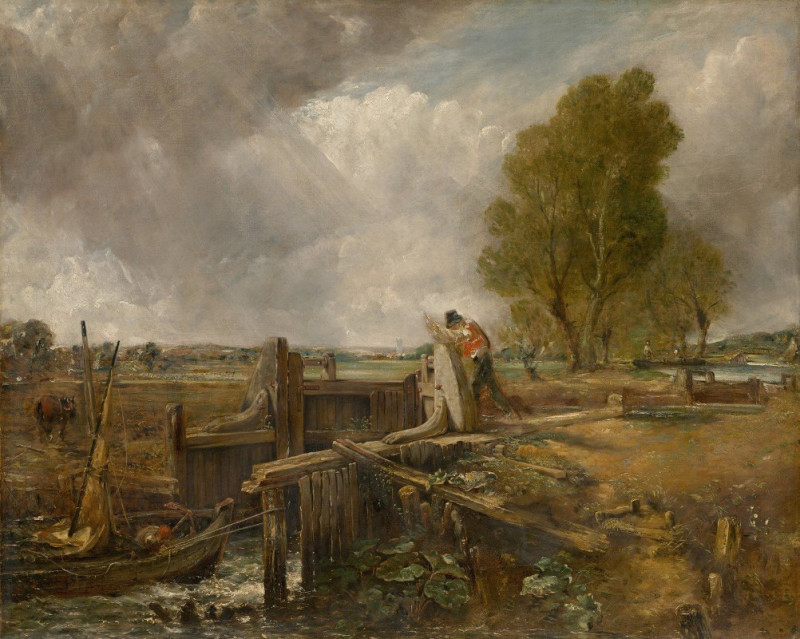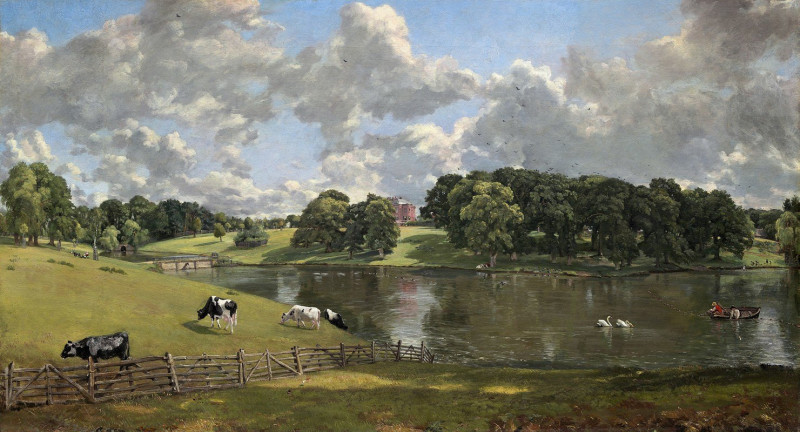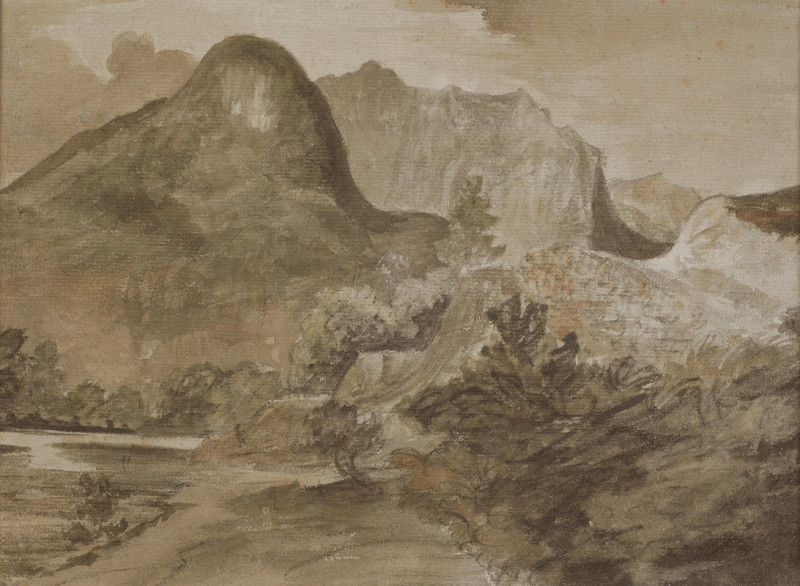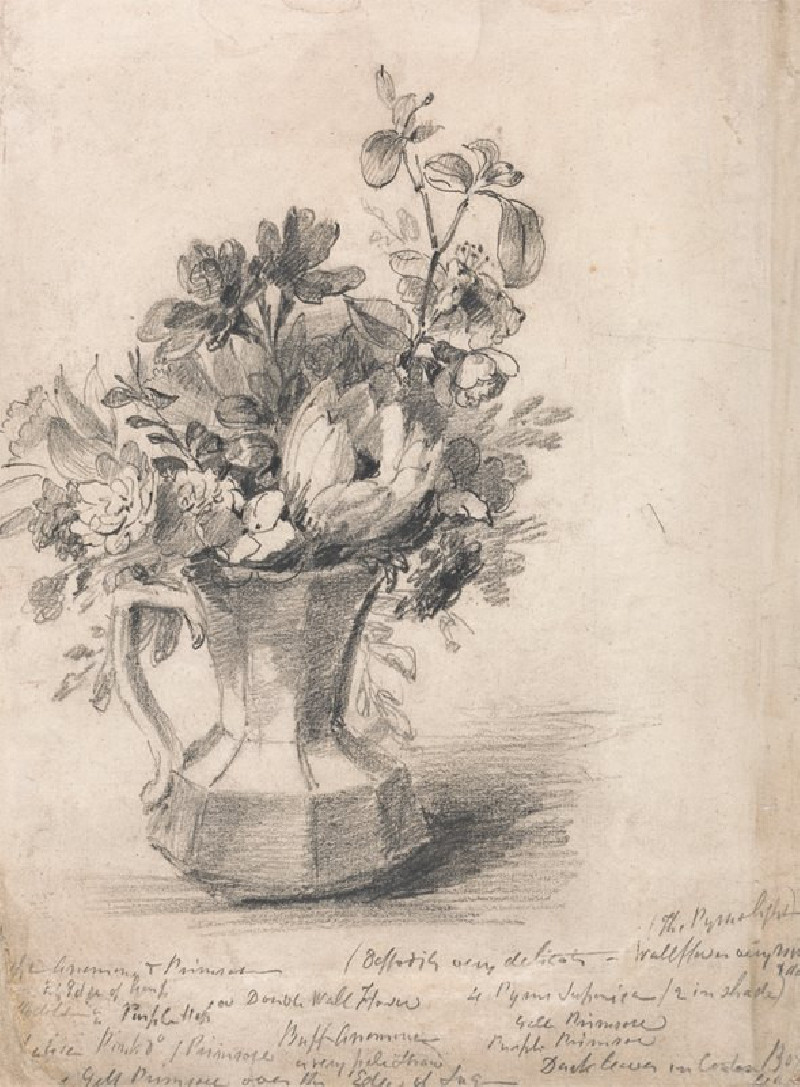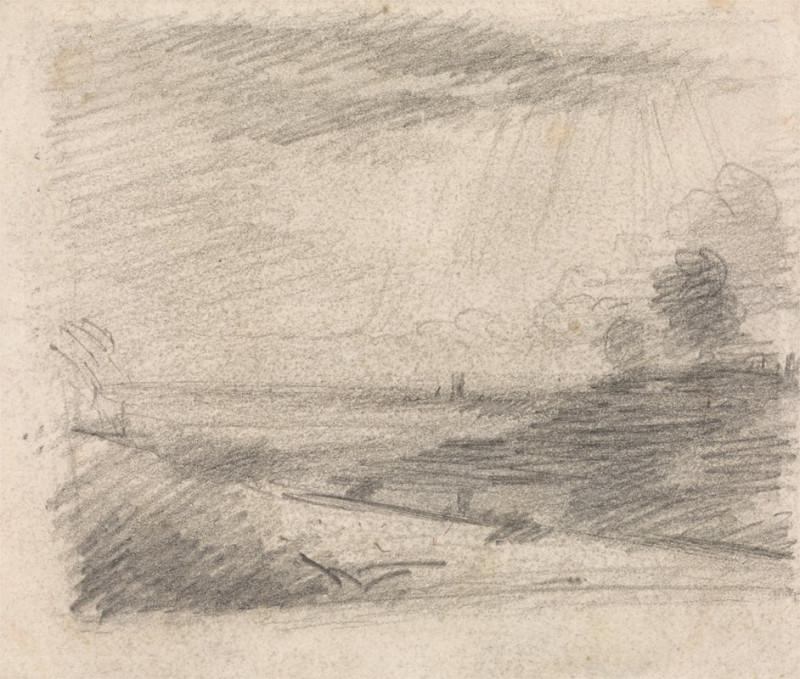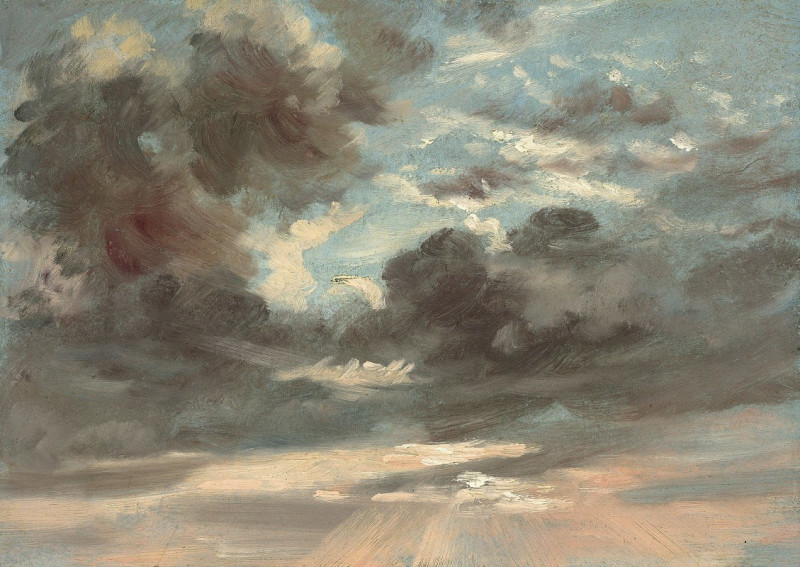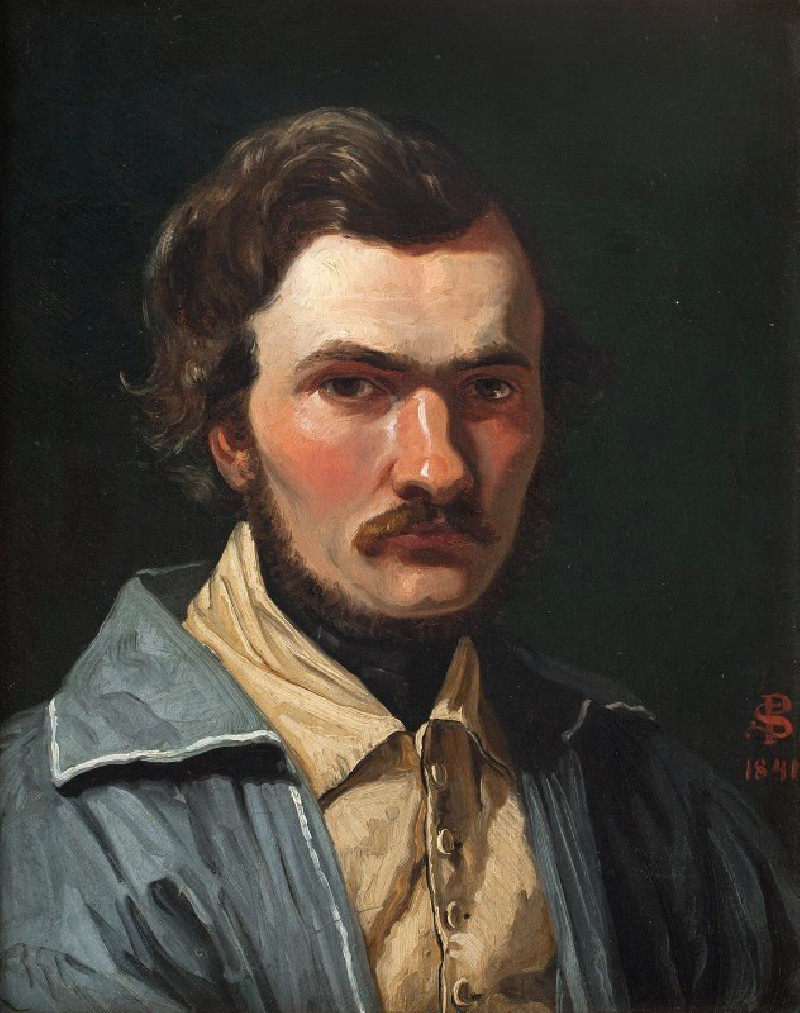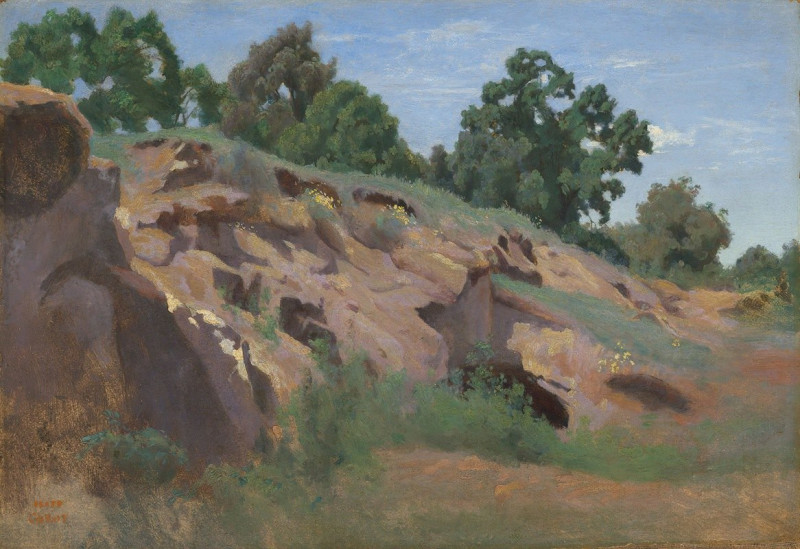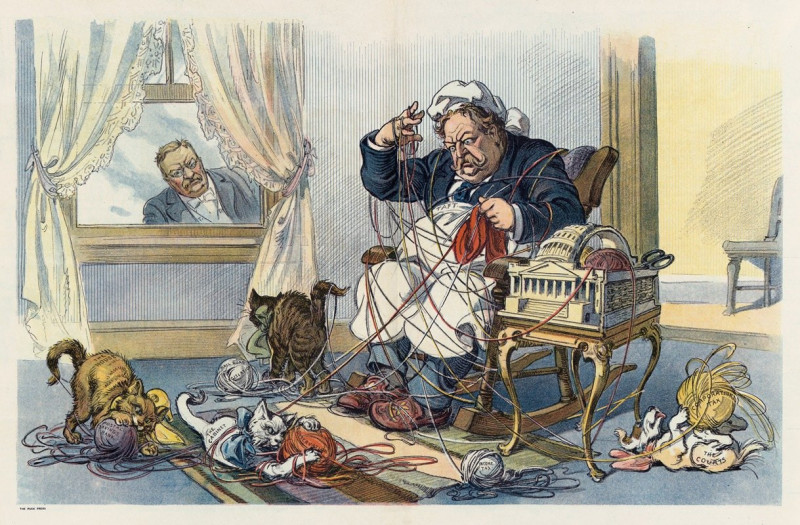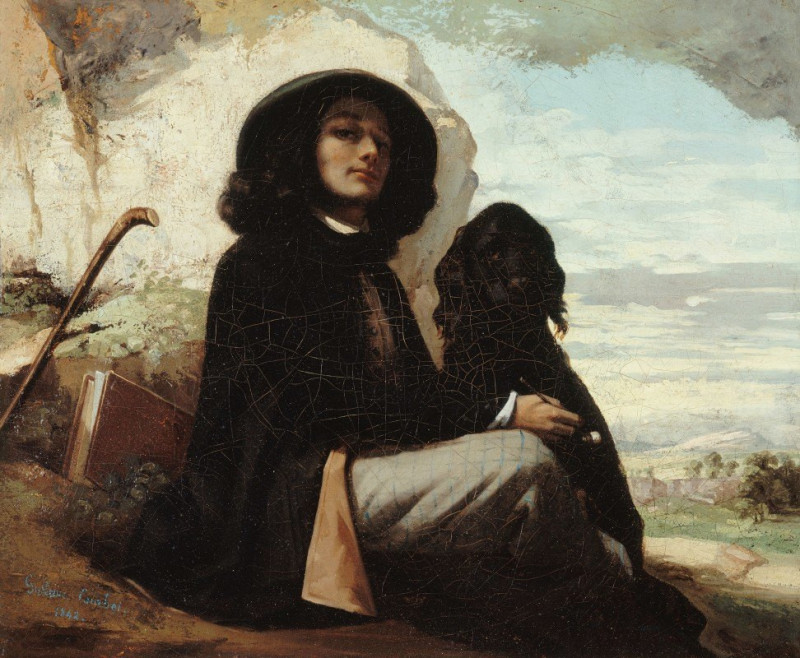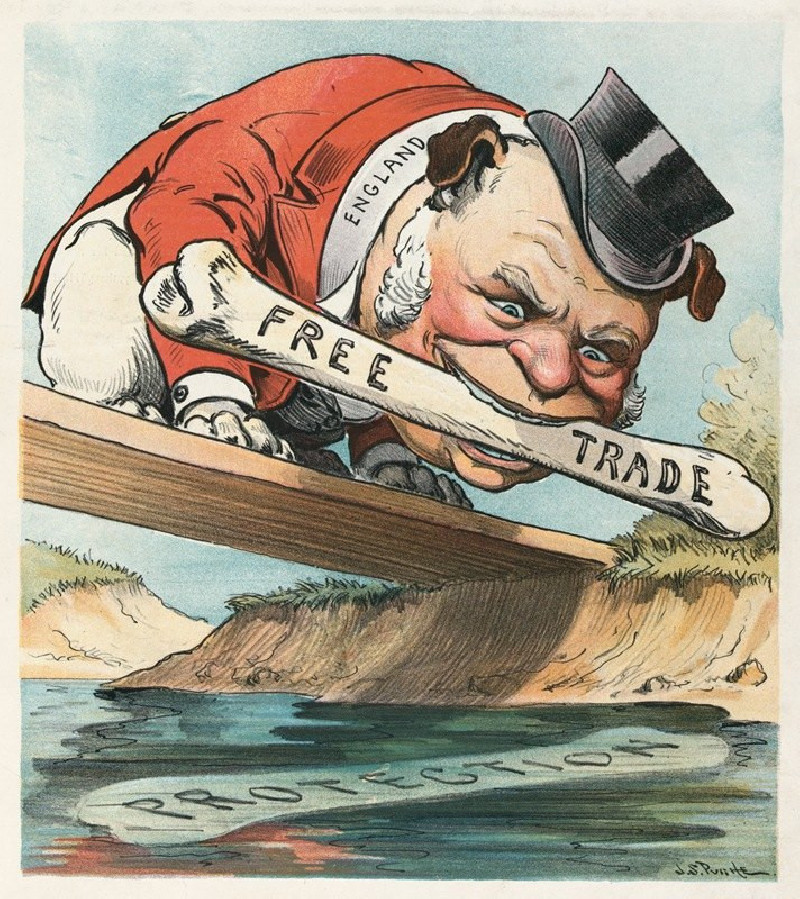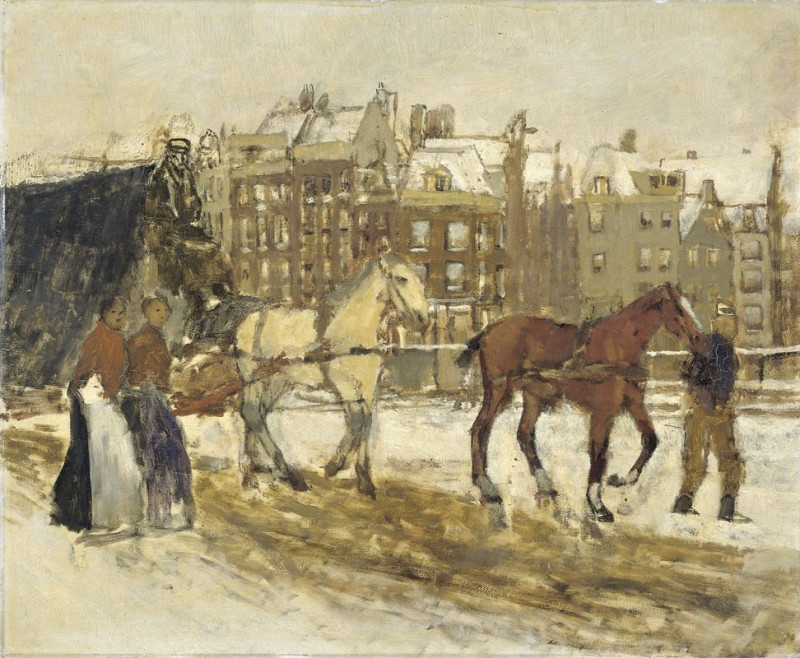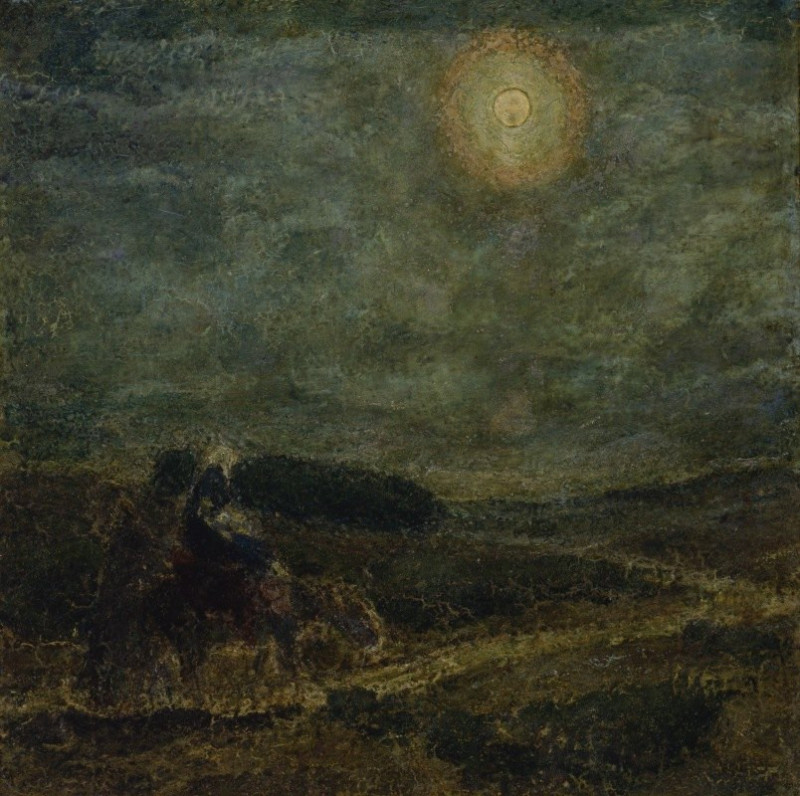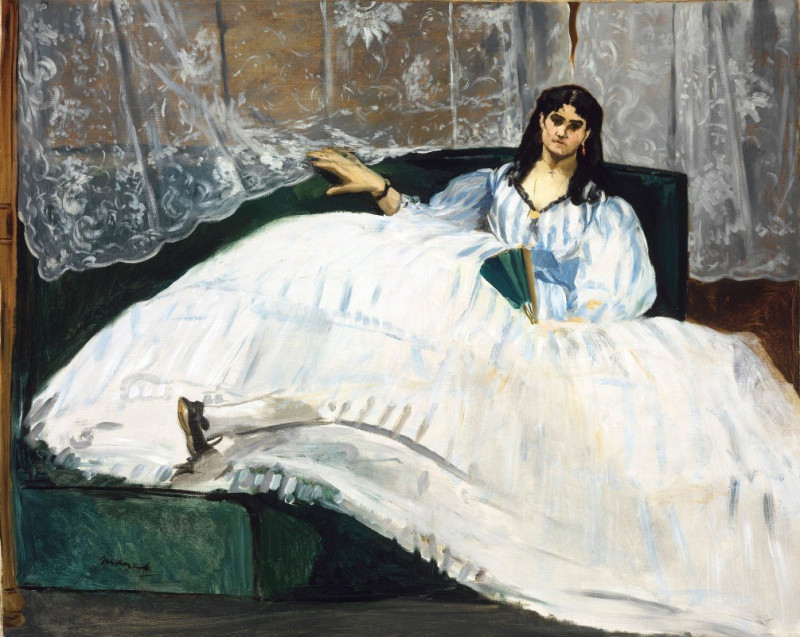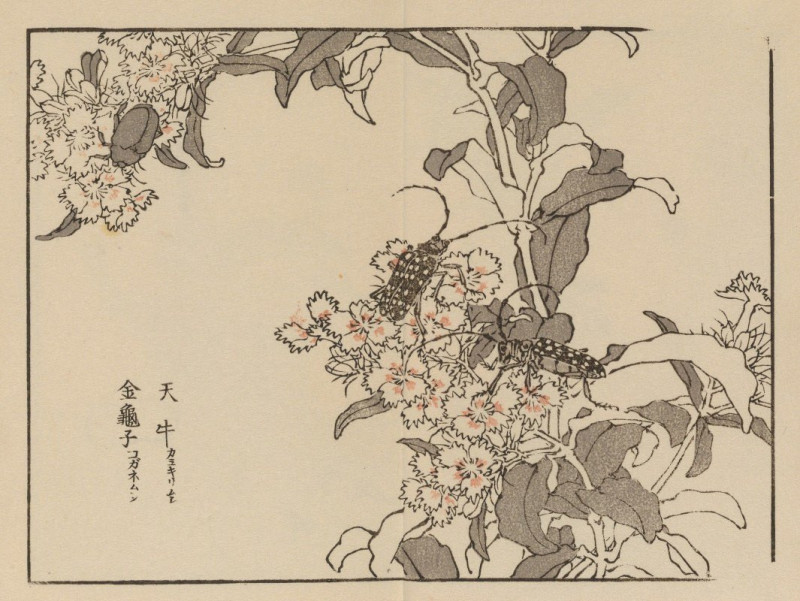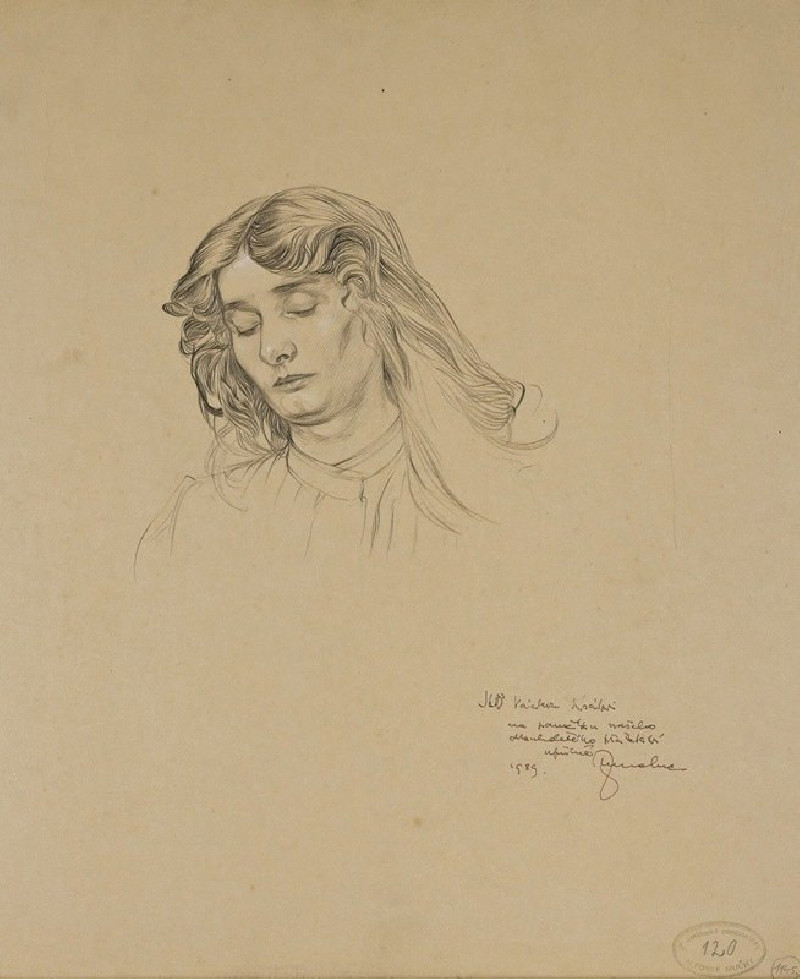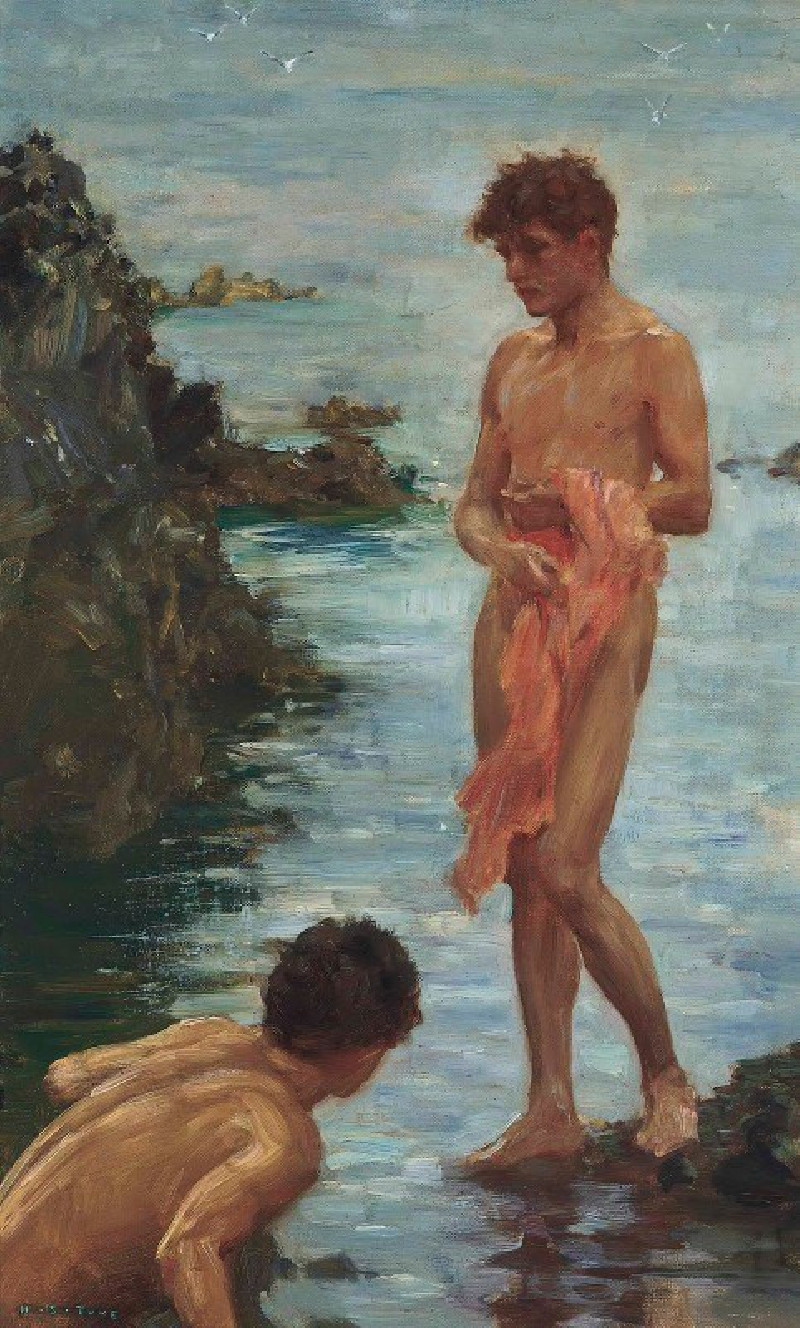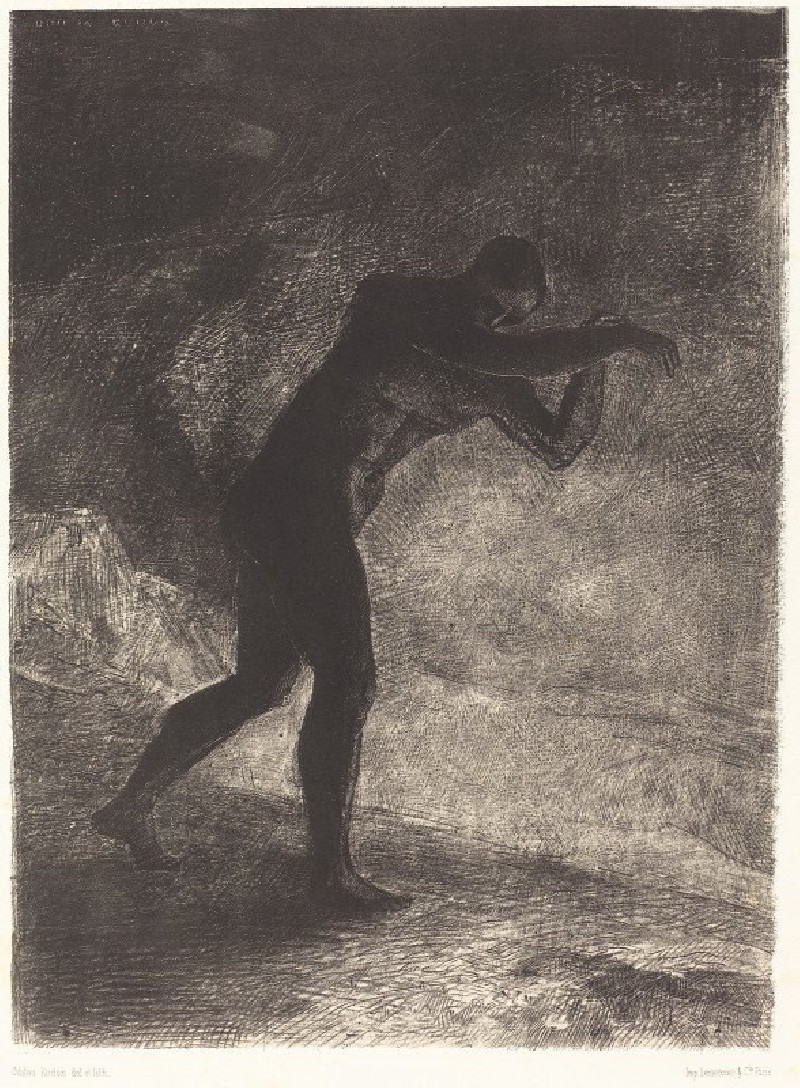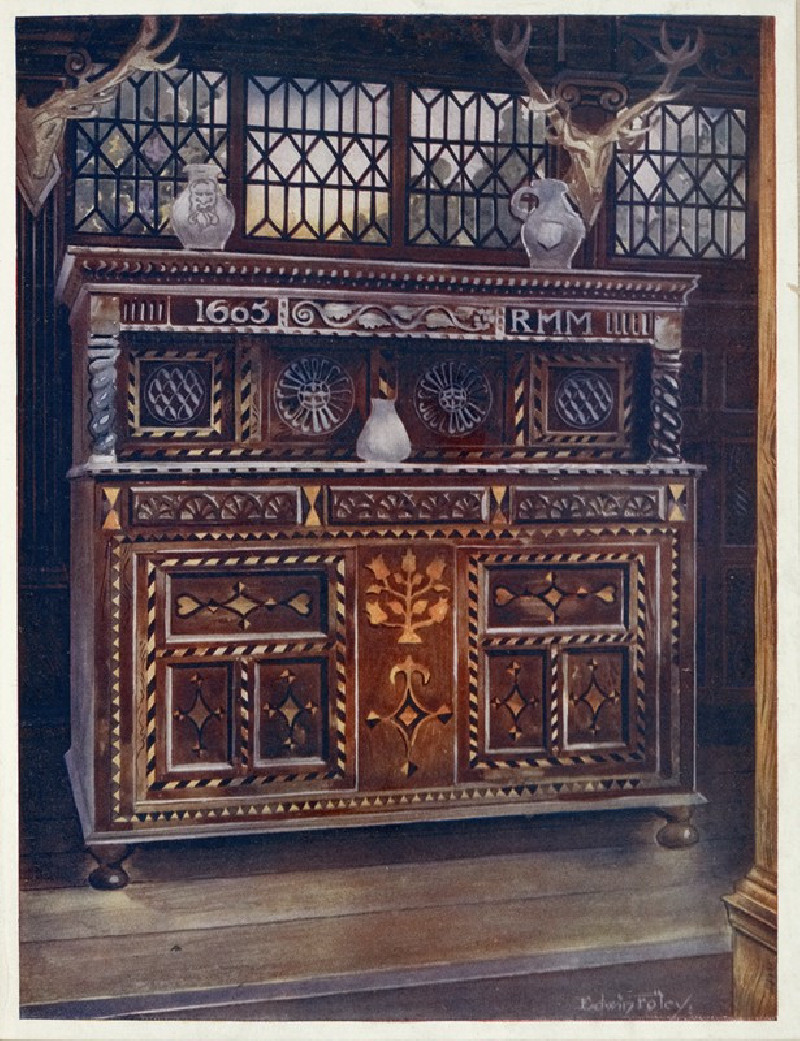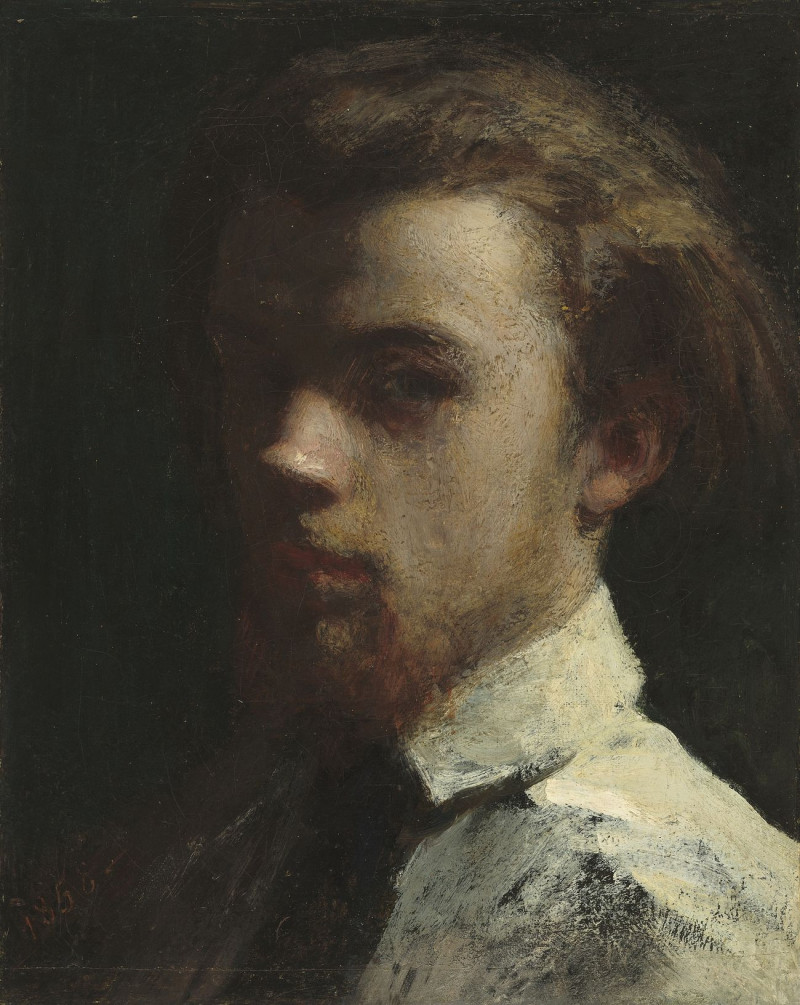Wooded Slope with a Receding Road (ca. 1805)
Technique: Giclée quality print
Recommended by our customers
More about this artwork
John Constable's evocative sketch, "Wooded Slope with a Receding Road" (ca. 1805), encapsulates the serene essence of the English countryside with a poignancy that is as refreshing as it is tranquil. The artwork, rendered with masterful strokes, reveals a verdant landscape, abundant with towering trees whose branches sway graciously in an unseen breeze. The focal point is a meandering road that gently recedes into the distance, drawing the viewer's eye towards the horizon, urging them to ponder where this quiet path might lead.Constable's adept use of chiaroscuro enhances the depth and dimensionality of the wooded terrain, creating a dynamic interplay of light and shadow that breathes life into every leaf and twig. The inclusion of distant figures on the path introduces a narrative element, suggesting a moment captured in time as they journey through the natural surroundings.
Delivery
Returns
John Constable RA was an English landscape painter in the Romantic tradition. Born in Suffolk, he is known principally for revolutionising the genre of landscape painting with his pictures of Dedham Vale, the area surrounding his home – now known as "Constable Country" – which he invested with an intensity of affection. "I should paint my own places best", he wrote to his friend John Fisher in 1821, "painting is but another word for feeling".

